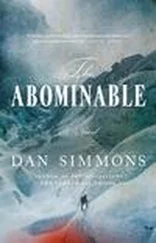The previous summer, it had seemed as if he would have to settle for sailing to the north pole rather than finding the North-West Passage. Captain Sir John Franklin had reason to be proud of his speed and efficiency so far. During his shortened summer voyage time that year before, 1845 – they had departed England late and Greenland even later than planned – he had nonetheless crossed Baffin Bay in record time, passed through Lancaster Sound south of Devon Island, then through Barrow Strait, and found his way south past Walker Point blocked by ice so late in August. But his Ice Masters reported open water to the north, past the western reaches of Devon Island into the Wellington Channel, so Franklin obeyed his secondary orders and turned north toward what could be an ice-free passage into the Open Polar Sea and the north pole.
There had been no opening to the fabled Open Polar Sea. The Grinnell Peninsula, which might have been part of an unknown Arctic Continent for all the men of the Franklin Expedition knew, had blocked their way and forced them to follow open water north by west, then almost due west, until they reached the western tip of that peninsula, turned north again, and encountered a solid mass of ice that extended north from the Wellington Channel apparently to infinity. Five days of sailing along that high wall of ice convinced Franklin, Fitzjames, Crozier, and the ice masters that there was no Open Polar Sea north of the Wellington Channel. At least not that summer.
Worsening ice conditions made them turn south, around the landmass previously known as only Cornwallis Land but now understood to be Cornwallis Island. If nothing else, Captain Sir John Franklin knew, his expedition had solved that puzzle.
With pack ice quickly freezing in place that late summer of 1845, Franklin had finished circumnavigating the huge, barren Cornwallis Island, reentered the Barrow Strait north of Cape Walker, confirmed that the way south past Cape Walker was still blocked – now solid with ice – and sought out their winter anchorage at little Beechey Island, entering a little harbour they had reconnoitered two weeks earlier. They’d arrived just in time, Franklin knew, for the day after they anchored in the shallow water of that harbour, the last open leads in Lancaster Sound beyond closed up and the moving pack ice would have made any more sailing impossible. It was doubtful if even such masterpieces of reinforced iron-and-oak technology as Erebus and Terror would have survived the winter out in the channel ice.
But now it was summer and they had been sailing south and west for weeks, restoring their provisions when they could, following every lead, seeking out any glint of open water they could spy from the lookout’s position high on the main mast, and every day smashing and forcing their way through the ice when they had to.
HMS Erebus continued to lead the way in the ice-breaking, as was her right as the flagship and her logical responsibility as the heavier ship with a more powerful – five horsepower more powerful – steam engine, but – confound it! – the long shaft to the screw had been bent by underwater ice; it would neither retract nor work properly, and Terror had moved into the lead position.
And with the icy shores of King William Land visible no more than fifty miles ahead of them to the south, the ships had moved out from under the protection of the huge island to their north – the one which had blocked their way directly to the southwest past Cape Walker, where his orders had directed him to sail, and instead had forced him south through Peel Sound and previously unexplored straits. Now the ice to the south and west had become active and almost continuous once again. Their pace had slowed to a crawl. The ice was thicker, the icebergs more frequent, the leads thinner and farther apart.
This morning of 3 September, Sir John had called a conference of his captains, top officers, engineers, and ice masters. The crowd fit comfortably into Sir John’s personal cabin; where this space on HMS Terror served as a Great Cabin for the officers, complete with libraries and music, the width of the stern of HMS Erebus was Sir John Franklin’s private quarters – twelve feet wide by an amazing twenty feet long, with a private commode “seat of ease” in a room to itself on the starboard side. Franklin ’s private privy was almost exactly the size of Captain Crozier’s and all the other officers’ entire cabins.
Edmund Hoar, Sir John’s steward, had lengthened the dining table until it could accommodate all the officers present – Commander Fitzjames, Lieutenants Gore, Le Vesconte, and Fairholme from Erebus , Captain Crozier and Lieutenants Little, Hodgson, and Irving from Terror . Besides those eight officers seated on either side of the table – Sir John sat at its head near the starboard bulkhead and entrance to his private head – also present, standing at the foot of the table, were the two ice masters, Mr. Blanky from Terror and Mr. Reid from Erebus , as well as the two engineers, Mr. Thompson from Crozier’s ship and Mr. Gregory from the flagship. Sir John had also asked one of the surgeons, Stanley from Erebus , to be in attendance. Franklin ’s steward had set out grape juice, cheeses, and ship’s biscuits, and there was a short period of chatting and relaxing before Sir John called the conference to order.
“Gentlemen,” said Sir John, “I am sure you all know why we are gathered here. Our expedition’s advance the last two months, thanks to the graciousness of God, has been wonderfully successful. We have left Beechey Island almost three hundred and fifty miles behind us. Lookouts and our sledge scouts still report glimpses of open water far to our south and west. It still may be in our power – God willing – to reach this open water and to navigate the North-West Passage this very autumn.
“But the ice to our west is increasing, I understand, in both thickness and frequency. Mr. Gregory reports that Erebus ’s main shaft has been damaged by ice and that although we can make headway under steam, the flagship’s effectiveness has been compromised. Our coal supplies are dwindling. Another winter will soon be upon us. In other words, gentlemen, we must decide today what our course of action and direction shall be. I think it is not unfair to say that the success or failure of our expedition shall be determined by what we decide here.”
There was a long silence.
Sir John gestured to the red-bearded ice master of HMS Erebus . “Perhaps it would be helpful, before we venture opinions and open discussion, to hear from our ice masters, engineers, and surgeon. Mr. Reid, could you inform the others of what you told me yesterday about our current and projected ice conditions?”
Reid, standing on the Erebus side of the five men at the end of the table, cleared his throat. Reid was a solitary sort and speaking in such exalted company made his face flush redder than his beard.
“Sir John,… Gentlemen… it ain’t no secret that we’ve been God-da-… that is… darned lucky in terms of ice conditions since the ships was released from ice in May and since we left Beechey Island harbour around the first of June. While we was in the straits, we been plowing through mostly sludge ice. That ain’t no problem. Nights – them few hours of darkness we have what’s called nights up here – we cut through pancake ice, that’s like what we been seeing the last week as the sea’s always on the verge of freezing, but that ain’t no real problem either.
“We been able to stay away from the young ice along the shores – that’s more serious stuff. Behind that’s the fast ice that’ll tear the hull off even a ship as reinforced as this here and Terror in the lead. But as I say, we stayed away from fast ice… so far.”
Читать дальше












